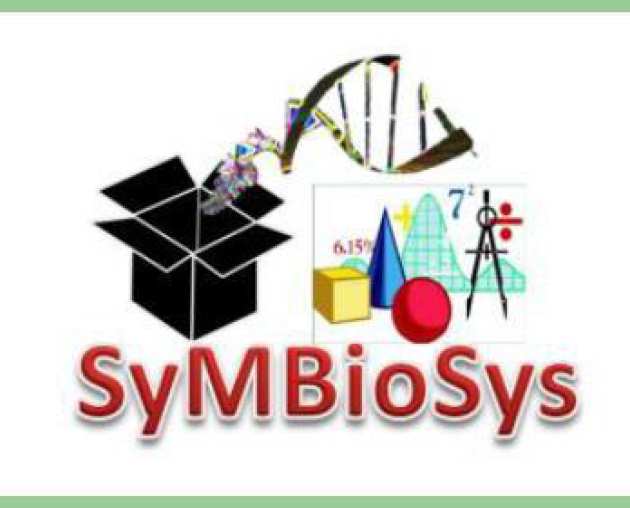| Rijksuniversiteit Groningen |
Netherlands |
Modeling metabolic behavior in bacteria including transcriptional regulation of metabolism |
(i) How to develop kinetic models that describe metabolic behavior including transcriptional regulation of metabolism; (ii) Exploit novel algorithms and tools developed by the modeling partners ; (iii) Exploit available omics data. |
http://ec.europa.eu/euraxess/34038422 |
| Aristotle University of Thessaloniki |
Greece |
Capturing Heterogeneity Across Many Scales using Population Balances (PB) models. |
(i) To develop a population balance (PB) -based modeling framework for capturing heterogeneity across many scale in biological systems engineering problems; (ii) To implement the developed models in PSE’s gPROMS modeling platform. |
http://ec.europa.eu/euraxess/34031729
Invitation for applications now closed.
|
| Uniklinikum Aachen |
Germany |
Modeling of cell signaling via hybrid networks. |
(i) Understanding in model and train hybrid networks combining signaling, regulatory, and metabolic networks: (ii) Exploit new algorithms developed by CSIC and AUTH; (iii) Insights in metabolic and cell signaling networks. |
http://www.combine.rwth-aachen.de/index.php/news/12.html |
| Uniklinikum Aachen |
Germany |
Identification of logic-based dynamic models of biochemical networks. |
(i) Understanding of optimization methods; (ii) Exploit advanced methods for mixed-integer dynamic optimization developed by the Banga group at CSIC; (iii) Data acquisition: mass spectrometry based phosphoproteomics to single-cell phosphorylation data recorded with imaging data. Use of xMAP core technology; (iv) Optimal experimental design. |
http://www.combine.rwth-aachen.de/index.php/news/12.html |
| AGENCIA ESTATAL CONSEJO SUPERIOR DE INVESTIGACIONES CIENTÍFICAS |
Spain |
Systematic reverse-engineering methods for dynamic model identification, selection and discrimination. |
(i) Use reverse-engineering methodology; (ii) Model selection and calibration; (iii) Optimization problem formulation; (iv) Mixed-integer nonlinear programming (MINLP); (v) Testing of the methods developed with model selection and discrimination regarding dynamic models of bacterial metabolism and cell signaling. |
https://goo.gl/85Op8t
Invitation for applications now closed.
|
| AGENCIA ESTATAL CONSEJO SUPERIOR DE INVESTIGACIONES CIENTÍFICAS |
Spain |
Optimal control methods to explain and predict operating principles in biochemical pathways. |
(i) Use optimal control formulations (using a mixed-integer dynamic optimization framework) in metabolic and signaling pathways; (ii) Testing the methods developed with unbranched and branched pathways of increasing complexity. |
https://goo.gl/85Op8t
Invitation for applications now closed.
|
| HUMBOLDT-UNIVERSITÄT |
Germany |
Optimal metabolic regulation through cell signaling. |
(i) Applying dynamic optimization methods to explain and predict behavior in complex biochemical pathways; (ii) Exploiting optimality principles to explain metabolic regulation via cell signaling. |
Invitation for applications now closed. |
| HUMBOLDT-UNIVERSITÄT |
Germany |
Drug target detection as optimality problem. |
(i) Applying dynamic optimization methods to explain and predict behavior in complex biochemical pathways; (ii) Model-based optimization strategies for drug target detection. |
Invitation for applications now closed. |
| PROCESS SYSTEMS ENTERPRISE |
UK |
Algorithms and software tools for calibration of biological process models. |
(i) Bayesian model calibration, and determination of the resulting parameter and output distributions; (ii) Bayesian or frequentist robust parameter estimation subject to uncertainty in parameters not to be estimated; (iii) Determination of frequentist nonlinear confidence regions and profile likelihood characterisation of the solution topology; (iv) Global uncertainty and sensitivity analysis. |
|
| INSILICO BIOTECHNOLOGY |
Germany |
Application of the new algorithms and software tools to biological test cases, from the analysis of metabolic and signaling networks to metabolic engineering and biomedical problems. |
(i) Design and (co)-develop methods and algorithms for identifying network models from OMICS time-series data (esp. metabolite data), which account for data uncertainty. (ii) Implement these methods and algorithms in an existing software capitalizing on high-performance computing infrastructures; (iii) Apply the newly developed software tool to (a) Identify gene targets for improving efficiency of microbial production processes, (b) Identify improved process conditions for recombinant protein production using mammalian cell lines. |
http://www.insilico-biotechnology.com/en/career |
| SILICOLIFE |
Portugal |
Development of bi-level strain optimization algorithms and software tools. |
(i) Development of bi-level strain optimization algorithms and respective computational tools; (ii) Identification of enzyme over/under expression or deletion leading to the maximization of the production of compounds of industrial interest; (iii) Metaheuristic optimization methods (e.g. Evolutionary Computation, Simulated Annealing) will be adapted and improved to address the underlying optimization tasks. |
https://silicolife.workable.com/jobs
Invitation for applications now closed.
|
| IMPERIAL COLLEGE LONDON |
UK |
Model-based optimization for personalized leukemia treatment using an integrated experimental / computational platform. |
(i) Development of an in silico leukemia model; (ii) Dealing with the extraction of patient/disease-specific experimental da ta; (iii) ‘Closing the loop’ between the in vitro and in silico platforms t owards pre-clinical applications. |
Applications period open until 11 November: https://www4.ad.ic.ac.uk/OA_HTML/OA.jsp?page |
| PROTATONCE |
Greece |
Integration of signaling models with clinical databases and proteomic, phopshoproteomic, transcriptomic, and genomi c data. |
(i) Learn the advanced methods developed by the Banga group at CSIC or Saez Group at UKAACHEN ; (ii) Application and validation of the methods developed in real-life p roblems for drug discovery; (iii) Integrates the methods with the state-of-the-art data that PAO produce in-house. |
http://www.protatonce.com/c193l |
| ÉCOLE POLYTECHNIQUE FÉDÉRALE DE LAUSANNE |
Switzerland |
Large-scale kinetic model of human metabolism. |
(i) Incorporate into a model: pathways for central carbon metabolism, essential amino acid metabolism and purine/pyrimidine metabolism; (ii) Identify the effects of changes in enzyme activities and environmental condi tions on the metabolic fluxes, redox and energy state, and other physiological states specific to the system of study; (iii) Integrate signal transduction pathways that inte ract with metabolism into the model. |
http://ec.europa.eu/euraxess/index.cfm/org/previewJV/34045577
open until end of November.
|
 Please Check Imperial's Jobs website for details of the latest positions and deadlines.
Please Check Imperial's Jobs website for details of the latest positions and deadlines.